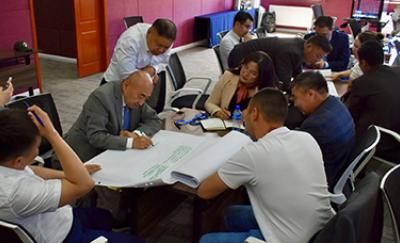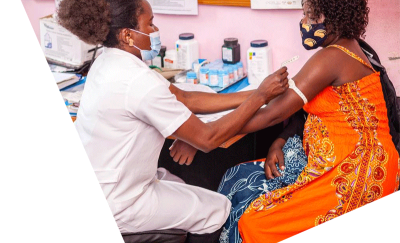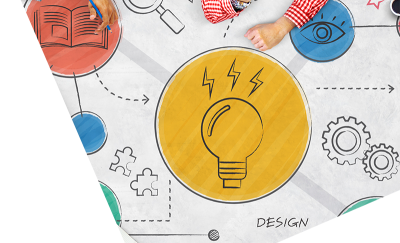Empowering Women as Change Agents in the Green Economy


The world is facing growing environmental pressure, with the effects of climate change intensifying and being felt with greater frequency. Major structural transformation is needed for the transition to a “green economy,” defined by the United Nations as "one that results in improved human well-being and social equity, while significantly reducing environmental risks and ecological scarcities.” This entails a shift away from resource-intensive, polluting technologies and industries towards cleaner, more sustainable technologies and practices. With the simultaneous pursuit of environmental, social, and economic goals, a green economy paves the way to sustainable development.
The Opportunity
The shift to a green economy will result in the loss of an estimated 6 million jobs, particularly in fossil fuel sectors. However, the International Labor Organization (ILO) estimates that 24 million new jobs could be created globally by the year 2030, assuming that the right mix of policies and programs are implemented. Experts say that green jobs – defined by the ILO as “jobs that contribute to preserving or restoring the environment” – are growing fastest in the energy, agriculture, transportation, construction, and manufacturing sectors. This represents a gateway for many women, who have historically been underpaid and undervalued in the labor market and under-represented in technical and leadership roles.
According to the World Bank, women’s labor force participation sits at just over 50 percent, far below that of men at 80 percent. The global pandemic widened this gap, and it will now take another 132 years to achieve gender equality. An often-quoted report notes that if gender gaps at work are bridged and women participate in the economy identically to men, approximately $28 trillion would be added to the annual global GDP in 2025.
As it currently stands, women are grossly under-represented in green jobs. For example, they make up only 32 percent of the global renewable energy workforce and hold only 1 out of 5 leadership roles in the renewable energy sector. Women represent 13.7 percent of the engineering workforce and comprise 30 percent of the manufacturing sector. Conversely, women are over-represented in climate-vulnerable sectors, comprising 48 percent of the global agricultural workforce, and 85 percent of the fish processing sector.
The benefits of a diverse labor force are well understood. Employing women in the renewable energy sector strengthens the talent pipeline and enhances product and service design and delivery. Reducing gender disparities in agriculture (in asset ownership, access to training, insurance, and finance) could increase productivity by 20–30 percent and raise total agricultural output by 2.5 to 4 percent. Studies have also indicated that women leaders are more likely to be in favor of sustainability and climate action. Finally, engaging women addresses the demand for green skills that is currently outpacing supply.


The Challenges
Engaging women as full and active participants in the transition to the green economy – as workers, entrepreneurs, and producers – seems like a winning solution, with positive effects on the environment, dismantling of historical inequities, and better business outcomes. Yet there are still barriers to be overcome.
Cultural and gender norms persist across many industries, leading to limited access to education and training, and to job segregation. Sectoral and occupational inequities are also ever-present. Female enrollment in science, technology, engineering, and math (STEM) fields, such as engineering, is as low as 8 percent in some countries. Additionally, women are less likely than males to enter and remain in STEM occupations, which comprise a significant portion of green jobs.
A significant gender gap exists when it comes to accessing finance. Although women entrepreneurs own 22 percent of micro-enterprises and 32 percent of small and medium enterprises (SME) globally, the MSME finance gap for women is an estimated $1.7 trillion. Green finance mechanisms are emerging globally and have the potential to help mitigate some of the gender-specific risks of climate change. But access has reportedly been difficult, and gender criteria are not always included in performance objectives and measurement frameworks.
Men still make most of the decisions in many organizations. Only 15 percent of board roles and 4 percent of CEO positions are held by women worldwide. Finally, many policies are still crafted without a gender lens, exacerbating inequality and discrimination.
The Way Forward
Governments are redefining policies, and businesses are shifting models and practices as countries pivot towards a green economy. Many actions are still needed to ensure that this transition is inclusive and fully engages women. Accomplishing this will require a combination of strategies that prioritizes gender equity. Some of these strategies include:
- For governments: Protecting women’s full and equal rights to land, property, and inheritance; practicing gender-sensitive budgeting; using a gender lens in policymaking (especially emerging green policies) and decision-making; promoting/facilitating STEM education for girls and women; and promoting gender-sensitive social protection for women.
- For the private sector: Using apprenticeships and other structured training programs to upskill women on the job; actively engaging women as stakeholders in green program design and implementation; investing in women-owned and led enterprises that use sustainable practices; adopting procurement policies that allocate a certain percentage of budgets to women-owned and led green enterprises; and adopting gender-sensitive workplace policies.
- For the financial sector: Eliminating credit and lending barriers to improve women’s access to green funds; establishing gender quotas in investment funds.
Gender gaps stunt innovation, productivity, and growth. Engaging women as agents of change in the green economy will be key to accelerating climate action.
Abt is advancing women’s representation and leadership in the green economy under the USAID Comprehensive Action for Climate Change Initiative. This flagship program is designed to help nations meet their Paris Agreement climate commitments by creating programs and policies to mitigate and adapt to climate change. Abt is further unpacking the issues discussed above during a panel discussion at Africa’s Green Economy Summit (AGES) in Cape Town, South Africa, from February 21-23, 2024.
Learn more about Abt’s work in climate change and equity.
Read More

Engaging Men in Gender-Based Violence Prevention
To observe the 16 Days of Activism Against GBV, Abt is convening a webinar on engaging men in GBV prevention.

Global Digital Health Forum (GDHF) 2024
Abt Global is sponsoring and presenting at the Global Digital Health Forum (GDHF) 2024.

Association for Public Policy Analysis & Management (APPAM) 2024 Fall Research Conference
Experts from Abt Global will be presenting at the Association for Public Policy Analysis & Management (APPAM) 2024 Fall Research Conference.

The Alliance for LGBTQI+ Inclusive Development presents The Impact of Geopolitical Shifts on Inclusive Development
Abt Global is hosting the upcoming hybrid LGBTQI+ Inclusive Development Summit on November 19, 2024.

